|
|
|
Oxford University Press
|
From the schools of ancient times to the present day, Gary Thomas explores how and why education has evolved has it has. Examining education worldwide, he explains the way schools work, noting how curricula are remarkably consistent around the world. Delving into some of the big questions, Thomas explores the history of education in this Very Short Introduction. Considering various styles such as progressive versus formal, he also explores the ideas of some of the big theorists, including Piaget and Vygotsky. Looking at different forms of education and styles of teaching, he considers the ways in which education is being improved by matching styles of learning to teaching, and ensuring that schools are more inclusive and meaningful for a broader range of students. He finishes by considering the ways in which education may develop over the coming century. |
|
In this Very Short Introduction, Prof Lord John Krebs provides a brief history of human food, from our remote ancestors 3 million years ago to the present day. By looking at the four great transitions in human food — cooking, agriculture, processing, and preservation — he considers a variety of questions, including why people like some kinds of foods and not others; how your senses contribute to flavour; the role of genetics in our likes and dislikes; and the differences in learning and culture around the world. In turn he considers aspects of diet, nutrition, and health, and the disparity between malnutrition in some places and overconsumption in others. Finally, he considers some of the big issues — the obesity crisis, sustainable agriculture, the role of new technologies such as genetic modification of crops, and ends by posing the question: how will it be possible to feed a population of 9 billion in 2050, without destroying our natural environment? |

|
The study of materials and their properties — their strength, optical and electrical properties, for example — forms a major and heavily funded area of research which supports both innovation and technology. Using modern scientific techniques, material scientists can explore and manipulate materials even at the atomic level, and can create new materials with remarkable properties, for example the way the reflect and refract light, their hardness combined with flexibility, their ability to store digital data, to respond to their environment, and to be scaffolds for the growth of new biological tissue. In this Very Short Introduction Christopher Hall begins with some familiar examples — gold, sand, and string, representing the big families of metals, ceramics, and polymers — and considers the properties, the making of materials, and the processes involved in their fabrication into objects, to show how materials science brings together engineering and technology with physics, chemistry, and biology. ABOUT THE SERIES: The Very Short Introductions series from Oxford University Press contains hundreds of titles in almost every subject area. These pocket-sized books are the perfect way to get ahead in a new subject quickly. Our expert authors combine facts, analysis, perspective, new ideas, and enthusiasm to make interesting and challenging topics highly readable. |

|
In recent decades we have come to realize that the microbial world is hugely diverse, and can be found in the most extreme environments. Fungi, single-celled protists, bacteria, archaea, and the vast array of viruses and sub-viral particles far outnumber plants and animals. Microbes, we now know, play a critical role in ecosystems, in the chemistry of atmosphere and oceans, and within our bodies. The field of microbiology, armed with new techniques from molecular biology, is now one of the most vibrant in the life sciences. In this Very Short Introduction Nicholas P. Money explores not only the traditional methods of microscopy and laboratory culture but also the modern techniques of genetic detection and DNA sequencing, genomic analysis, and genetic manipulation. In turn he demonstrates how advances in microbiology have had a tremendous impact on the areas of medicine, agriculture, and biotechnology. ABOUT THE SERIES: The Very Short Introductions series from Oxford University Press contains hundreds of titles in almost every subject area. These pocket-sized books are the perfect way to get ahead in a new subject quickly. Our expert authors combine facts, analysis, perspective, new ideas, and enthusiasm to make interesting and challenging topics highly readable. |
|
Minerals existed long before any forms of life, playing a key role in the origin and evolution of life; an interaction with biological systems that we are only now beginning to understand. Exploring the traditional strand of mineralogy, which emphasises the important mineral families, the well-established analytical methods (optical microscopy and X-ray diffraction) and the dramatic developments made in techniques over recent decades, David Vaughan also introduces the modern strand of mineralogy, which explores the role minerals play in the plate tectonic cycle and how they interact with the living world. Demonstrating how minerals can be critical for human health and illness by providing essential nutrients and releasing poisons, Vaughan explores the multitude of ways in which minerals have aided our understanding of the world. ABOUT THE SERIES: The Very Short Introductions series from Oxford University Press contains hundreds of titles in almost every subject area. These pocket-sized books are the perfect way to get ahead in a new subject quickly. Our expert authors combine facts, analysis, perspective, new ideas, and enthusiasm to make interesting and challenging topics highly readable. |
|
It was the time when the rush for spoils filled a corner of the forest with the yelping of hounds, the cracking of whips, the flaring of torches. The appetites let loose were satisfied at last, shamelessly, amid the sound of crumbling neighbourhoods and fortunes made in six months. The city had become an orgy of gold and women. The Kill (La Curee) is the second volume in Zola's great cycle of twenty novels, Les Rougon-Macquart, and the first to establish Paris — the capital of modernity — as the centre of Zola's narrative world. Conceived as a representation of the uncontrollable appetites unleashed by the Second Empire (1852-70) and the transformation of the city by Baron Haussmann, the novel combines into a single, powerful vision the twin themes of lust for money and lust for pleasure. The all-pervading promiscuity of the new Paris is reflected in the dissolute and frenetic lives of an unscrupulous property speculator, Saccard, his neurotic wife Renee, and her dandified lover, Saccard's son Maxime. |
|
Respectable people... What bastards! Unjustly deported to Devil's Island following Louis-Napoleon's coup-d'etat in December 1851, Florent Quenu escapes and returns to Paris. He finds the city changed beyond recognition. The old Marche des Innocents has been knocked down as part of Haussmann's grand programme of urban reconstruction to make way for Les Halles, the spectacular new food markets. Disgusted by a bourgeois society whose devotion to food is inseparable from its devotion to the Government, Florent attempts an insurrection. Les Halles, apocalyptic and destructive, play an active role in Zola's picture of a world in which food and the injustice of society are inextricably linked. The Belly of Paris (Le Ventre de Paris) is the third volume in Zola's famous cycle of twenty novels, Les Rougon-Macquart. It introduces the painter Claude Lantier and in its satirical representation of the bourgeoisie and capitalism complements Zola's other great novels of social conflict and urban poverty. |
|
It was not so much his great height that marked him... it was the careless powerful look that he had, in spite of a lameness checking each step like the jerk of a chain. Set against the bleak winter landscape of New England, Ethan Frome tells the story of a poor farmer, lonely and downtrodden, his wife Zeena, and her cousin, the enchanting Mattie Silver. In the playing out of this short novel's powerful and engrossing drama, Edith Wharton constructed her least characteristic and most celebrated book. In its unyielding and shocking pessimism, its bleak demonstration of tragic waste, it is a masterpiece of psychological and emotional realism. In her introduction the distinguished critic Elaine Showalter discusses the background to the novel's composition and the reasons for its enduring success. |
|
As the Pargiters, a middle-class English family, move from the oppressive confines of the Victorian home of the 1880s to the 'present day' of the 1930s, they are weighed down by the pressures of war, the social strictures of patriarchy, capitalism and Empire, and the rise of Fascism. Engaging with a painful struggle between utopian hopefulness and crippled with despair, the novel is a savage indictment of Virginia Woolf's society, but its bitter sadness is relieved by the longing for some better way of life, where 'freedom and justice' might really be possible. This is Virginia Woolf's longest novel, and the one she found the most difficult to write. The most popular of all her writings during her lifetime, it can now be re-read as the most challengingly political, even revolutionary, of all her books. |
|
Inspired by Voltaire's two-year stay in England (1726-8), this is one of the key works of the Enlightment. Exactly contemporary with Gulliver's Travels and The Beggar's Opera, Voltaire's controversial pronouncements on politics, philosophy, religion, and literature have place the Letters among the great Augustan satires. Voltaire wrote most of the book in English, in which he was fluent and witty, and it fast became a bestseller in Britain. He re-wrote it in French as the Lettres philosophiques, and current editions in English translate his French. This edition restores for the modern reader Voltaire's own English text, allowing us to appreciate him as a stylist at first hand. It is the only critical edition of the original text and, as well as providing an introduction and notes, it includes intriguing accounts of Voltaire by contemporary English ovservers. |
|
Henry Jones, an unprepossessing London insurance clerk, knows that his uncle has disinherited him. The old man's will, made out at the last minute in favour of Henry's charming cousin Isabel Brodrick, lies neatly folded in a well-thumbed volume of sermons in his book-room; Henry saw him put it there before he died. Unfortunately nobody else knows where the will is, and Henry stands to lose everything by making the knowledge public. Cousin Henry, first published in 1879, is one of the most unusual and intriguing of Trollope's shorter novels and its unlikely hero is a timid coward consumed by guilt. But Trollope's handling of his character and dilemma is masterly in its insight and compassion; he knew he had nothing quite like it elsewhere in his fiction. |
|
French naturalist Dr Aronnax embarks on an expedition to hunt down a sea monster, only to discover instead the Nautilus, a self-contained world built by its enigmatic captain. Together Nemo and Aronnax explore the underwater marvels, undergo a transcendent experience amongst the ruins of Atlantis, and plant a black flag at the South Pole. But Nemo's mission is one of revenge — and his methods coldly efficient. Verne's classic work has left a profound mark on the twentieth century. Its themes are universal, is style humorous and grandiose, its construction masterly. This new and unabridged translation by the father of Verne studies brilliantly conveys the novel's tones and range. It appears with a distinguished Introduction and Notes, reporting the very first study of the manuscripts, together with revelations about the artistic and scientific references. ABOUT THE SERIES: For over 100 years Oxford World's Classics has made available the widest range of literature from around the globe. Each affordable volume reflects Oxford's commitment to scholarship, providing the most accurate text plus a wealth of other valuable features, including expert introductions by leading authorities, helpful notes to clarify the text, up-to-date bibliographies for further study, and much more. |
|
Arms and the man I sing of Troy... So begins one of the greatest works of literature in any language. Written by the Roman poet Virgil more than two thousand years ago, the story of Aeneas' seven-year journey from the ruins of Troy to Italy, where he becomes the founding ancestor of Rome, is a narrative on an epic scale: Aeneas and his companions contend not only with human enemies but with the whim of the gods. His destiny preordained by Jupiter, Aeneas is nevertheless assailed by dangers invoked by the goddess Juno, and by the torments of love, loyalty, and despair. Virgil's supreme achievement is not only to reveal Rome's imperial future for his patron Augustus, but to invest it with both passion and suffering for all those caught up in the fates of others. Frederick Ahl's new translation echoes the Virgilian hexameter in a thrillingly accurate and engaging style. An Introduction by Elaine Fantham, and Ahl's comprehensive notes and invaluable indexed glossary complement the translation. |
|
So you're the little woman who wrote the book that started this great war! These words, said to have been uttered by Abraham Lincoln, signal the celebrity of Uncle Tom's Cabin. The first American novel to become an international best-seller, Stowe's novel charts the progress from slavery to freedom of fugitives who escape the chains of American chattel slavery, and of a martyr who transcends all earthly ties. At the middle of the nineteenth-century, the names of its characters — Little Eva, Topsy, Uncle Tom — were renowned. A hundred years later, 'Uncle Tom' still had meaning, but, to Blacks everywhere it had become a curse. This edition firmly locates Uncle Tom's Cabin within the context of African-American writing, the issues of race and the role of women. Its appendices include the most important contemporary African-American literary responses to the glorification of Uncle Tom's Christian resignation as well as excerpts from popular slave narratives, quoted by Stowe in her justification of the dramatization of slavery, Key to Uncles Tom's Cabin. |
|
The bitter tragedy of human life — horrors of death, attack, retreat, advance, and the great game of Destiny and Chance. In The Liberation of Jerusalem (Gerusalemme liberata, 1581), Torquato Tasso set out to write an epic to rival the Iliad and the Aeneid. Unlike his predecessors, he took his subject not from myth but from history: the Christian capture of Jerusalem during the First Crusade. The siege of the city is played out alongside a magical romance of love and sacrifice, in which the Christian knight Rinaldo succumbs to the charms of the pagan sorceress Armida, and the warrior maiden Clorinda inspires a fatal passion in the Christian Tancred. Tasso's masterpiece left its mark on writers from Spenser and Milton to Goethe and Byron, and inspired countless painters and composers. This is the first English translation in modern times that faithfully reflects both the sense and the verse form of the original. Max Wickert's fine rendering is introduced by Mark Davie, who places Tasso's poem in the context of his life and times and points to the qualities that have ensured its lasting impact on Western culture. |

|
In my own marriage I paid such a terrible price for sex-ignorance that I feel that knowledge gained at such a cost should be placed at the service of humanity. The book that was to become Married Love grew from Marie Stopes's conviction that the state of modern middle-class marriage was, like her own, desperate, and that the cause of this desperation was sexual unhappiness. She knew her book would probably electrify this country and it remains one of the best known sex manuals ever written. It combines a lyrical evocation of marital love with a no-nonsense and detailed account of sexual intercourse and sexual pleasure that was a sensation when it was published in 1918. Stopes advocated equality in marriage and the importance of women's sexuality and sexual desire, as well as openly supporting birth control. In this edition of Stopes's ground-breaking work, Ross McKibbin's introduction reveals fascinating insights into Stopes and prevailing attitudes to class, religion, science, and above all, sex. |
|
No man is crushed by misfortune unless he has first been deceived by prosperity. In these dialogues and essays the Stoic philosopher Seneca outlines his thoughts on how to live in a troubled world. Tutor to the young emperor Nero, Seneca wrote exercises in practical philosophy that draw upon contemporary Roman life and illuminate the intellectual concerns of the day. They also have much to say to the modern reader, as Seneca ranges widely across subjects such as the shortness of life, tranquillity of mind, anger, mercy, happiness, and grief at the loss of a loved one. Seneca's accessible, aphoristic style makes his writing especially attractive as an introduction to Stoic philosophy, and belies its reputation for austerity and dogmatism. This edition combines a clear and modern translation with an introduction to Seneca's life and philosophical interests, and helpful notes. |

|
Philip Sidney and his sister Mary translated the biblical psalms into some of the greatest lyric poems of the English Renaissance. This is the first complete edition for over forty years, providing the Psalms in an authoritative modernized text, with glosses and notes and an introduction setting the Psalms in their literary and cultural context. |
|
Written in India in the early eighth century AD, Santideva's Bodhicaryavatara became one of the most popular accounts of the Buddhist's spiritual path. The Bodhicaryavatara takes as its subject the profound desire to become a Buddha and save all beings from suffering. The person who enacts such a desire is a Bodhisattva. Santideva not only sets out what the Bodhisattva must do and become, he also invokes the intense feelings of aspiration which underlie such a commitment, using language which has inspired Buddhists in their religious life from his time to the present. Important as a manual of training among Mahayana Buddhists, especially in the Tibetan Buddhist tradition, the Bodhicaryavatara continues to be used as the basis for teaching by modern Buddhist teachers. This is a new translation from the original language, with detailed annotations explaining allusions and technical references. The Introduction sets Santideva's work in context, and for the first time explain its structure. |

|
Indiana (1831) is an absorbing and vivid romantic novel, set partly in provincial France, partly in Paris, and partly on a tropical island. It tells the story of a beautiful and innocent young woman, married at sixteen to a much older man. She falls passionately in love with a handsome, frivolous neighbour but discovers too late that his idea of love is quite different from her own. It is only after a series of painful experiences that she comes to appreciate the silent devotion of her loyal and protective cousin. |
|